|
Motorcycle News - 2019 Yamaha Niken First Ride Review
https://ift.tt/2sgAiLG 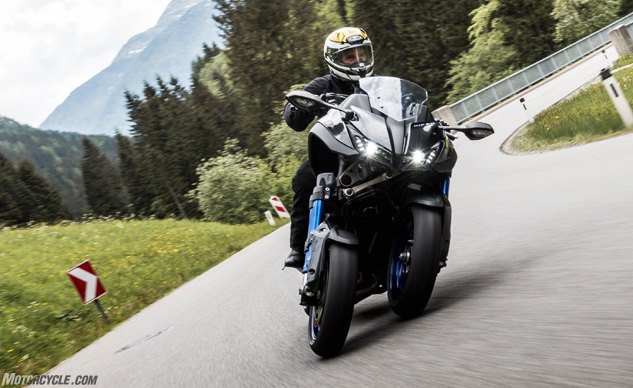 2019 Yamaha NikenEditor Score: 90.0%
To be honest, I didn’t pay any more attention when Yamaha announced it would actually produce the Niken than I do to the unicorns that occasionally wander into the back yard as I’m semi-dozing on the patio after a nightcap. Fanciful creatures of the imagination. But I snapped to fully woke when the invite came in over the email transom to come to Austria and ride the thing. What, it actually exists? Sure, why not? The Grossglockner road is the highest surfaced mountain pass road in Austria. It connects Bruck in the state of Salzburg with Heiligenblut in Carinthia. Every year when the snow thaws enough to plow the road open again – May 9 this year – the villagers from the two reunited towns throw a big festival. It’s a fantastic motorcycle road, in fact it’s a private toll road built to boost tourism for your driving and riding pleasure, but in May it’s pretty dang chilly up there at 8,200 feet, and that chill means you must cool your jets a tad if you wish to remain on the right side of the Grossglockner’s traction gods. For the bike’s coming-out party, the photographers decided to set up shop (in this case shot) not so far from the summit. Trying to look like a motorcycle magazine hero can be taxing when the tires are cold, the road is colder, the bike is new, and everybody’s watching – including a few tour buses and many motorists on and in two and four wheeled vehicles. How much does it cost to temporarily close the GG on a national holiday? That’s what Yamaha Europe did. To throw the Niken away here would truly be the crowning humiliation in a career renowned for them. Not to worry: After one tentative pass by the cameras, it was actually a breeze to get the Niken heeled over to peg-scraping lean angles. When I laid hands on the tires after four or five camera strafing runs, the rear was barely warm, the fronts were still cool to the touch. If carving corners is the basis of what makes sporty motorcycling so enjoyable, then the Niken is all about distilling that feeling and making it easier and safer for the rider to carve away to his heart’s content, under a much broader range of conditions thanks to having two contact patches up front instead of just one: The hope is that when one loses traction, the other takes up the slack long enough for its mate to regain grip. Like Mat Oxley just wrote here, finding a way to prevent front-end slides is the Holy Grail of motorcycle racing: Honda found a device called Mark Marquez, Yamaha built the Niken. Of course it’s not for racing, but you get the idea. Less stress over losing the front end, more confidence, and more room to play, says Yamaha, all adds up to more fun. 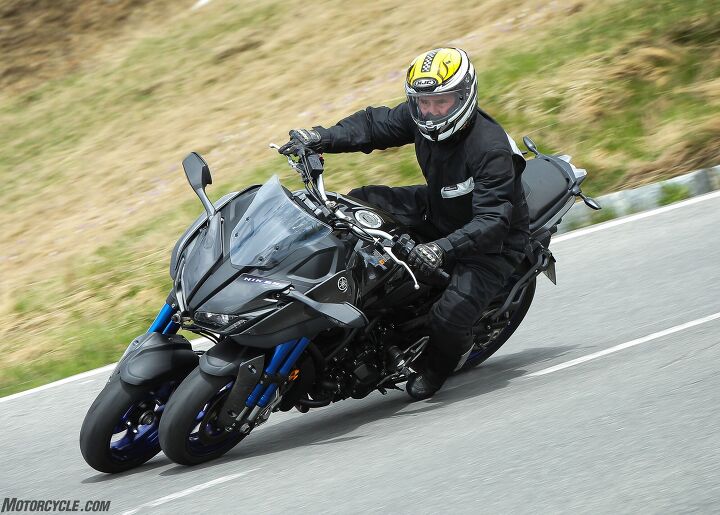
On a warm day, it feels like you could lean farther than the 45 degrees Yamaha says is possible before you reach “lean lock,” which sounds ominous and like it would lead to unpleasantness? Aft of the unusual front end, the rest is based on Yamaha’s most excellent MT-09 847cc Triple, housed in a hybrid frame of aluminum castings at the steering head and swingarm pivot area, joined by a tubular steel frame. To compensate for the twice-as-much grip up front, the engineers moved the rider two inches (50mm) toward the rear, achieving 50/50 weight bias, they say. They also move you up a bit, to 32.3 inches, which is a smidge taller than the MT-09 but 30mm lower than the Tracer 900’s seat height. The seat’s a bit on the wide side, too, in keeping with the Niken’s wider frontal area, and the initial impression is that this is a pretty large and hefty motorcycle as you pick it up off the sidestand. Unlike the Piaggio MP3, there’s no locking device to hold you upright; you have to put a foot down at stops. 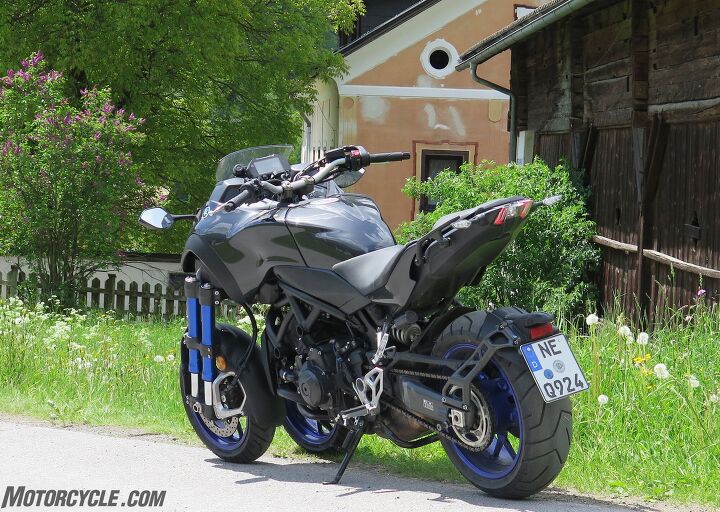
A widish aluminum handlebar provides plenty of leverage, and open, upright ergonomics make the Niken all-day comfortable. Yamaha claims a fully fueled (4.8 gallons) weight of 580 pounds, which is 155 more than it claims for the two-wheeled MT-09. Steering’s not what you’d call light, but once you’re accustomed, the Niken can be shoved onto its side really quickly, thanks to just 74mm of trail. That’s not much trail at all, but the two 15-inch wheels spinning up front bolster stability. To fully appreciate how much more side grip you’ve got might take more than a day. Chasing our British guide into one fast corner that tightened up, I squeezed on a finger of front brake and felt more tendency for the Niken to stand up than a conventional bike. Discussing that with him over coffee, he pointed out the flip side of that is instead of braking in that situation, you can just countersteer more than you think you should, and the Niken will tighten its line and carry on. He was right. It does. At a fairly rapid pace, his brake light rarely came on, and I gradually followed in his (three) tire tracks, though dragging the rear brake in corners settles and tightens the Niken’s line just as it does a normal motorcycle. Go ahead and dive in deep as you want, those two front wheels probably have you covered. If front-end feel is a bit numb compared to what you’re used to, the flip side of that is there’s so much traction you don’t need as much feel. (Our Brit friend was also worried about reacclimating to his R1 back home after a week blasting around the Alps on the Niken.) Scooting you back on the bike two inches did get more weight on the lonely back tire, but not enough to keep you from exploiting another cool characteristic of the Niken: It’s able to spin the rear up out of tight corners in finest crossed-up hooligan fashion, with much less chance of winding up in the weeds thanks to the miracle of there being two contact patches up front. Traction Control level 1 seems to be just about right for safe play in dry conditions, or Off if you’re feeling lucky. At TC level 2, the rear wouldn’t spin. Another thing that keeps you from getting too stupid is that the Niken’s 847 cc Triple has had its Crossplane crankshaft’s inertia increased by 18%. It’s still a great, soulful motor, and the Niken is still plenty fast, but the extra weight and bigger frontal area does blunt acceleration a bit compared to the MT. To offset that, the Niken gets a two-teeth bigger sprocket out back: 5200 rpm at 80 mph doesn’t seem too busy. In fact, it’s nice and smooth. If we’re still complaining about abrupt response on the MT-09, I doubt it’s a problem for even the finickiest rider on the Niken, which offers Soft, Normal and Direct fueling modes. 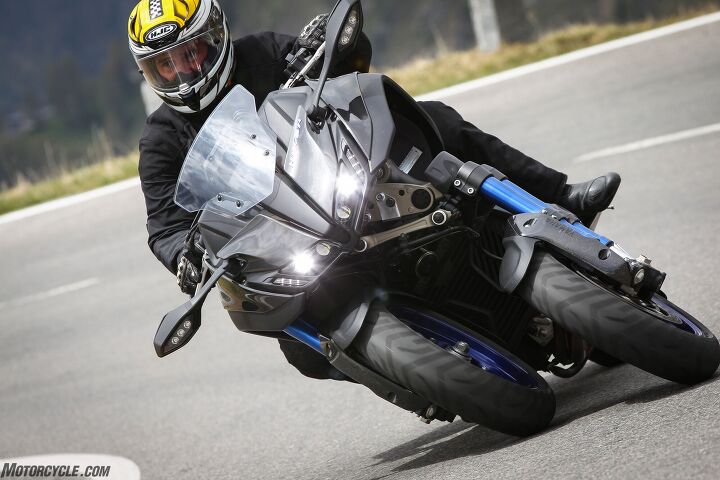
You got your parallel quadrilateral arms, cantilevered telescopic suspension, Yamaha’s unique “Ackermann” design which makes the inside wheel turn slightly sharper than the outside one… 410mm between contact patches (16.1 in.) was what the engineers settled on as being just right, which allows 45 degrees of lean. The easiest way to see how it all works is this video. Once you’ve been riding it for 20 minutes, all the initial weirdness pretty much fades away, and you’re just riding a comfortable, well-suspended motorcycle that corners like crazy and is perfectly acceptable everywhere. If you’re riding along behind one, though, the weird never quite subsides. When’s he going to put his feet back on the pegs? Oncoming riders (there are tons in the Tyrol), go to stick out a hand for a wave but then aren’t sure if you’re a motorcycle or not? When it rains, the Niken leaves two skinny trails 16 inches apart with a fat one in between… 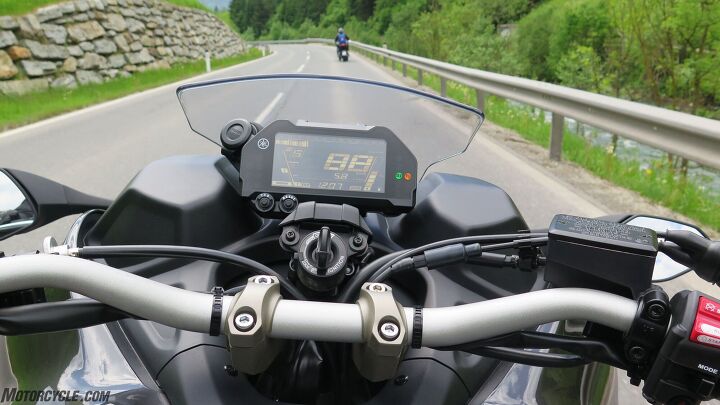
Sorry, no TFT, but you do get cruise control and a quickshifter for upshifts, anyway. The mirrors are great even if you’re fat. The ride is pretty sweet, since lots of bumps only affect half of the front end instead of the whole bike, and the rear tire is meeting many of them for the first time. The 43mm rear fork tubes of each pair contain the actual suspension components, including adjustments for preload, rebound and compression damping, while the front pair of 41mm tubes are mostly there for steering – pulling that inside wheel in a bit tighter radius than the outer one. The single shock out back has a remote knob for preload adjustments, and adjustable rebound damping – which it could’ve used more of, but not enough so I bothered to adjust it. Overall, the ride is more sport-tour than sport, which is as it should be. Yamaha places the Niken in the Tour section of its website and blesses it with electronic cruise control. According to the onboard computer, my test unit was burning 5.8 L of fuel per 100 km, or 40.5 mpg. The aluminum tank holds 4.8 gallons. There was no need for cruise control when we turned off onto the road to Mörtschach for lunch (which is pronounced not at all like it’s spelled) a one-lane goatpath climbing to 3000 feet, clinging to the side of a canyon. A possibly derogatory but mostly affectionate term applied to some Austrians who live up in these canyons, or hollers as Dolly Parton would call them, is schluchtenscheisser. Climbing up about 100 first-gear switchbacks at first was awkward and heavyish, until you realized you could just let the Niken fall onto its side as you cracked the gas back on, and it would do the rest. Likewise on the way back down, but dragging a little back brake. Once you adjust to its peccadilloes, it’s easier to ride than a conventional bike. Brakes are the weakest point. Each front wheel gets one 265.6mm disc clamped by a four-piston caliper that looks like the ones on my 2000 R1, and there’s another 298mm disc out back. The fronts don’t have much power upon initial squeeze, but they do have plenty when you go for a manly grip on the lever. Each front wheel has its own independent ABS, so that when you’re approaching tire-locking decel, you get a little wiggle in the handlebar that’s a bit alarming at first but, like so many things on the Niken, you quickly adjust to. Logic would dictate the Niken should have a shorter stopping distance than a motorcycle with one front contact patch, then again it is slowing 150 pounds more than the MT-09, so who knows? The rear ABS kicked in too soon on my bike, maybe a function of the Bridgestone A41 Adventure tires Yamaha specs at both ends, custom-made for the Niken, maybe to keep people from achieving irrational exuberance when cornering. That rear’s a normal 17-inch size, and if you’re wondering about tire selection for the 15-inch fronts, not to worry. They’re the same size as Yamaha’s TMAX scooter, which enjoys its own race series in various parts of the world and a selection of high-performance rubber to match. The stock Bridgestones, though, seem perfectly capable of getting to the edge of the Niken’s performance envelope well before they warm up. Which is literally cool, especially if you live in Bruck and cain’t hardly wait for the snow to melt on the Grossglockner so you can go visit your mates in Heiligenblut and Mörtschach. Or really if you live anywhere it rains a lot, and you like to fly through the curves anyway. At heart, the Niken is an insurance policy for hardcore sportbikers who like to ride hard even in sketchy conditions; the premium they pay takes the form of a little extra weight. For us dessicated Californians who take our cars or stay home and meditate when it rains, maybe not so much. Hats off to Yamaha for doing abnormal things now and then just because they can, flexing their engineering muscles. They’re fully aware the Niken’s not for everybody; they don’t plan to build many, and the US distributor doesn’t plan to import many (and not until October at the earliest). The Niken will offer a “limited ownership opportunity,” so if you’re looking down your nose all Dick Ruble-like, they probably won’t sell you one anyway, and you probably can’t swing the approximate $16k asking price. On the other hand, you never know what the consumer will unexpectedly seize upon. I give you the Can Am Spyder. On the Niken, you can still lane-split. A Niken with MT-10 power would be quite the spectacle. You can loft the front wheels now, but not for long. Yamaha does think the Niken will appeal to: 1) Innovators, 35 to 45 years old, looking for the latest technology, 2) mature, expert riders who replace their bikes often and are into the Experience, and 3) Functionalists, who’re willing to pay for extra confidence and stability to make them better, safer riders. For the experienced rider who’s had everything but wants more, for early adopters of interesting tech, for people who just want to ride safer, I’d give the Niken’s two front wheels more than two thumbs up if I had them. I had an absolute blast riding it for a day.
Motorcycles via Motorcycle.comMotorcycle.com https://ift.tt/Xzx9iy May 28, 2018 at 11:30AM
ASH Green
7/9/2020 01:06:49 am
Awesome! No words. You always go one step beyond.
Reply
Leave a Reply. |
�
Categories
All
Archives
November 2020
|
|||||||||||||||||||||||||||||||||||||||||||||||||||||||||||||||||||||||||||||||||||||||||||||


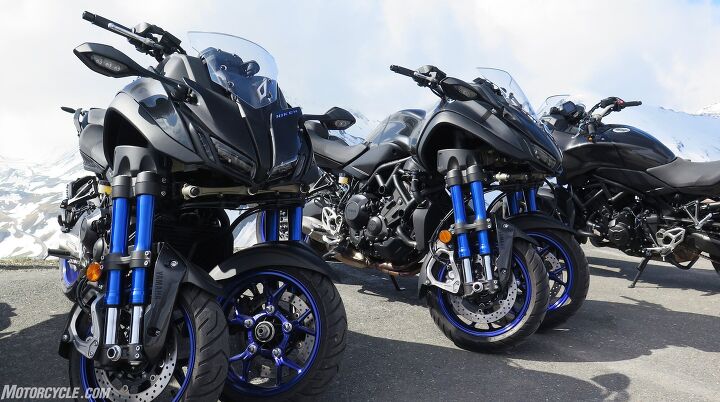
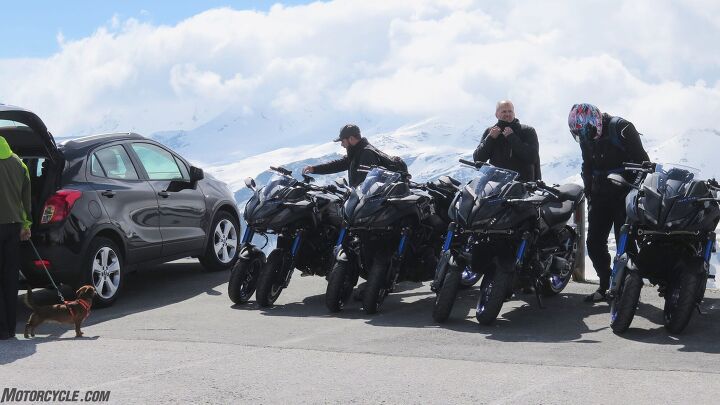
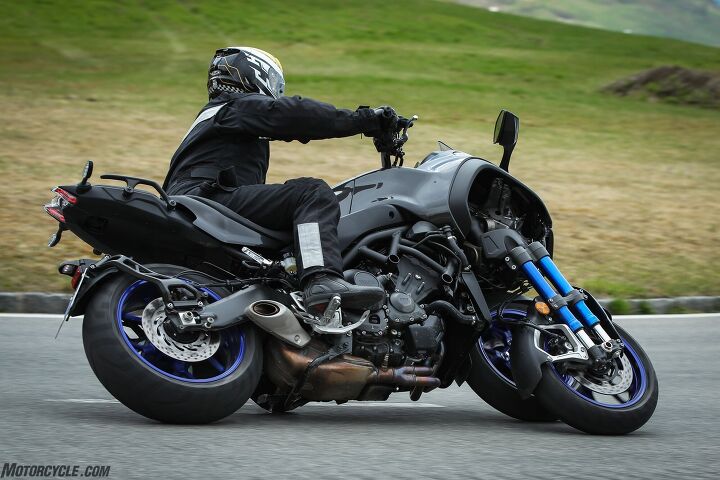
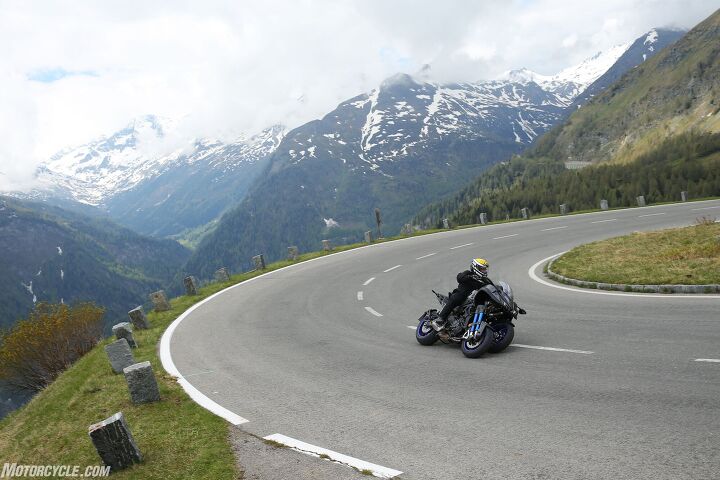
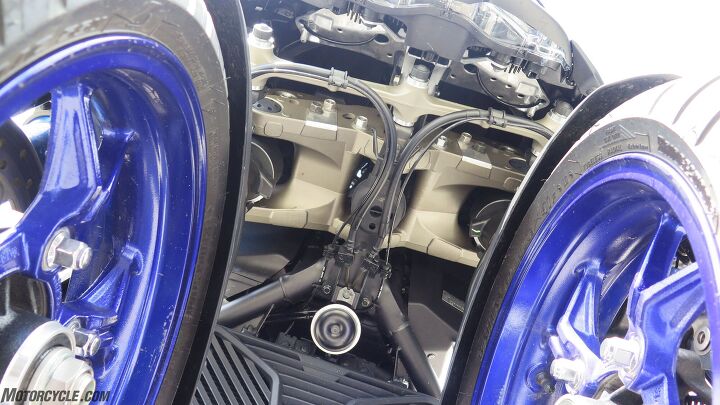
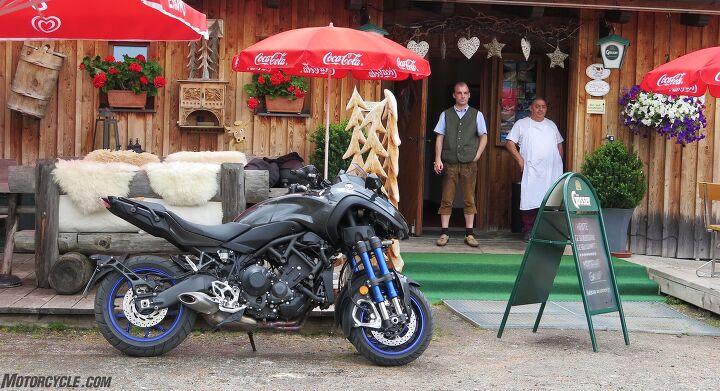
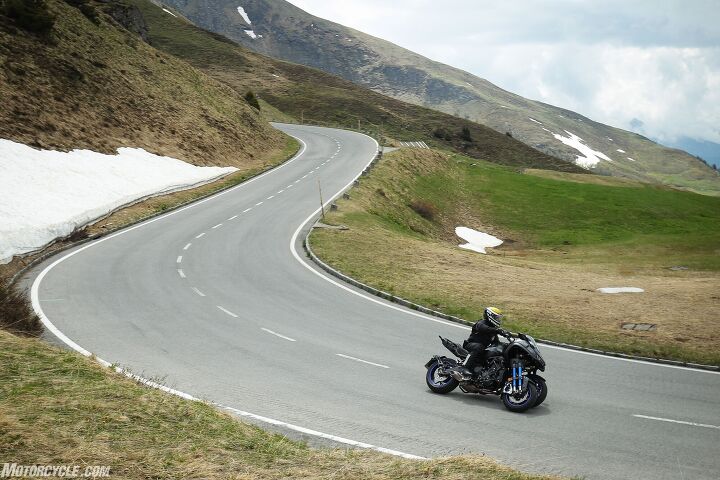
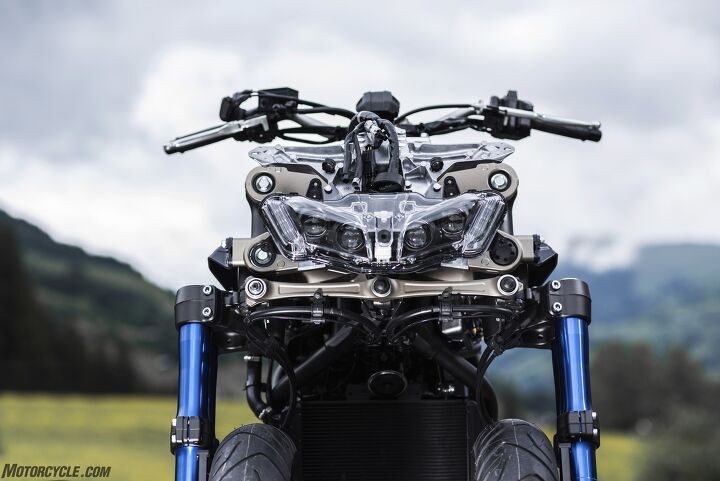
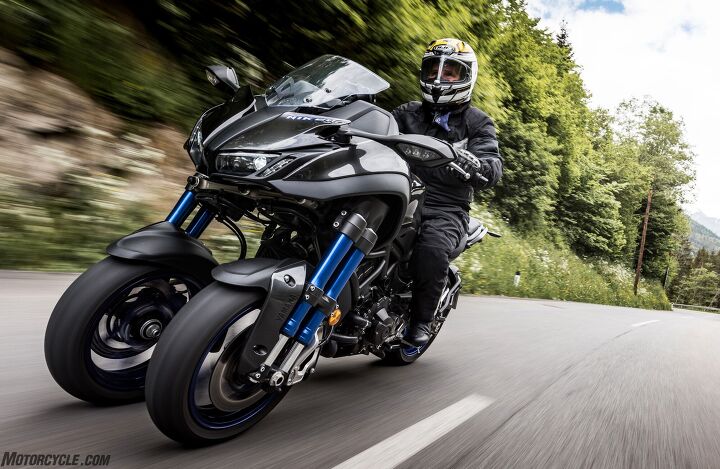
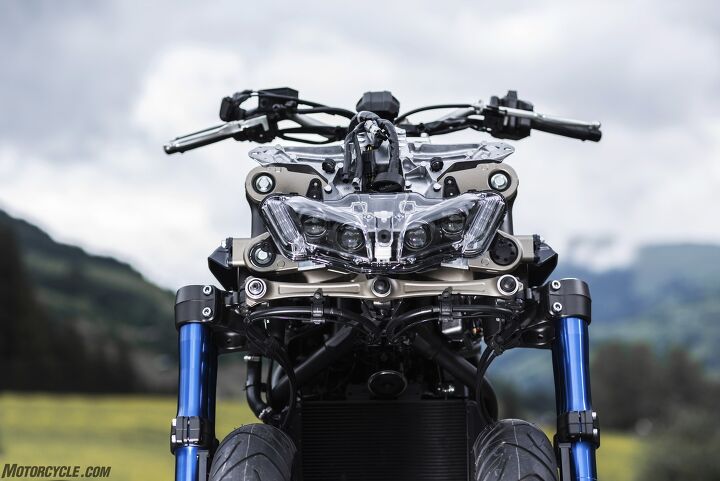
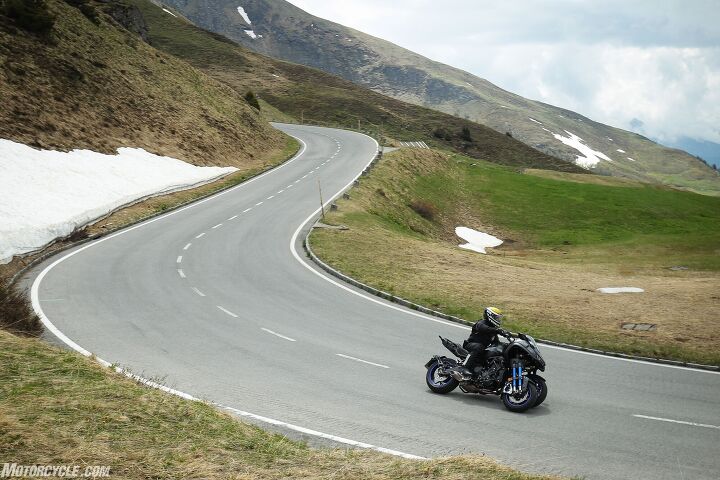
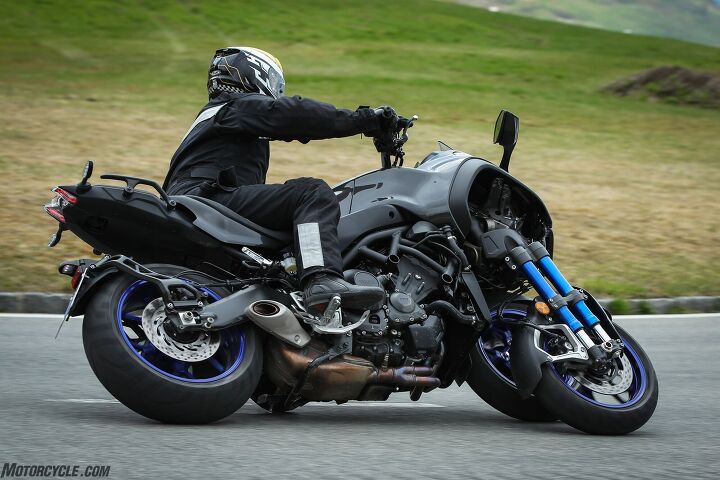
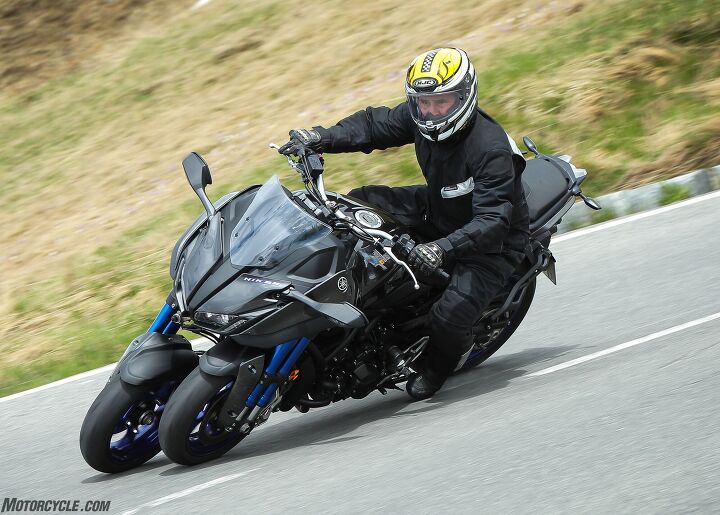
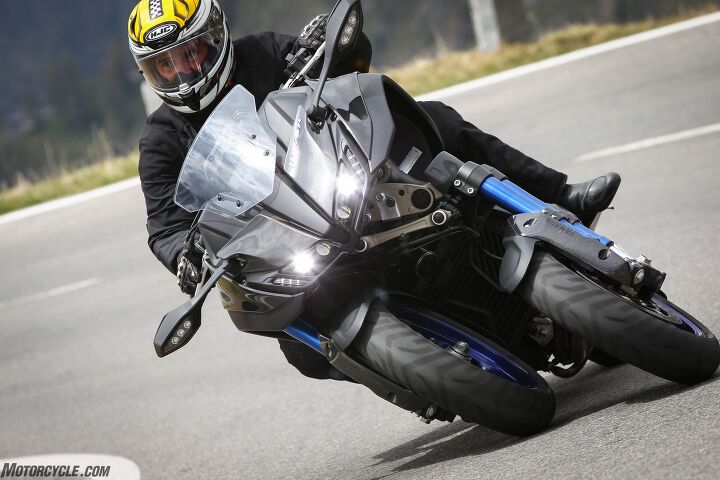
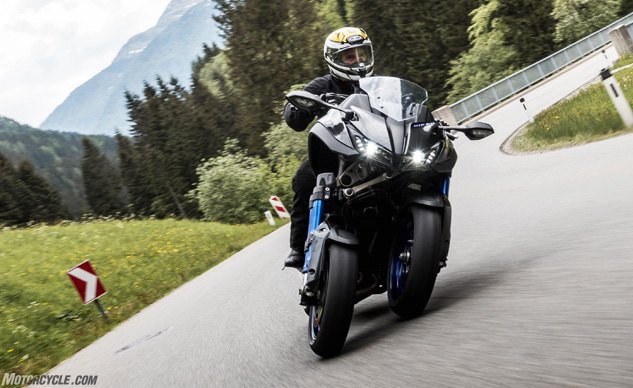
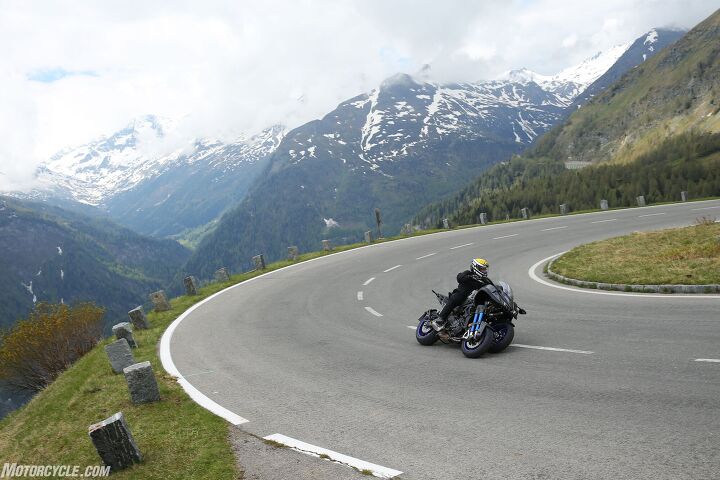
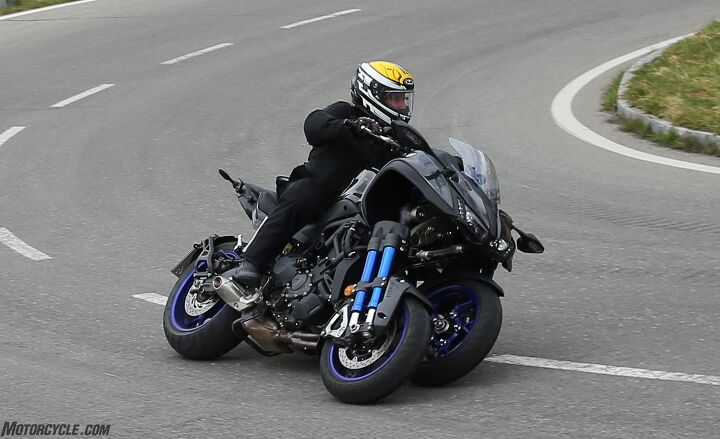
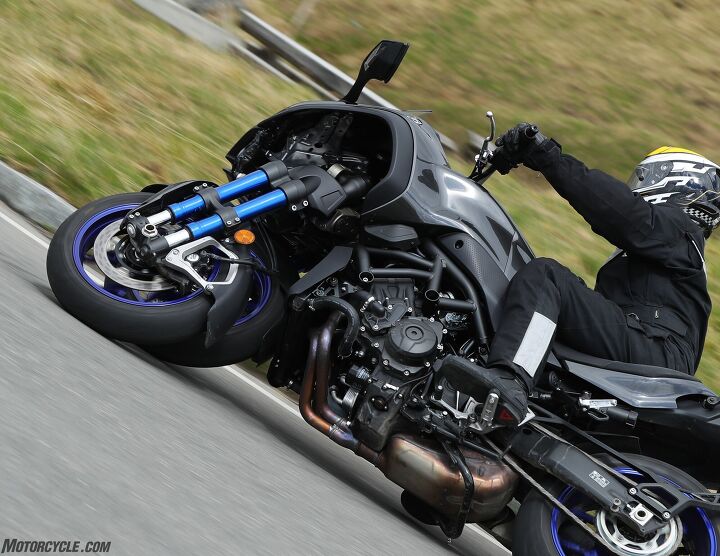
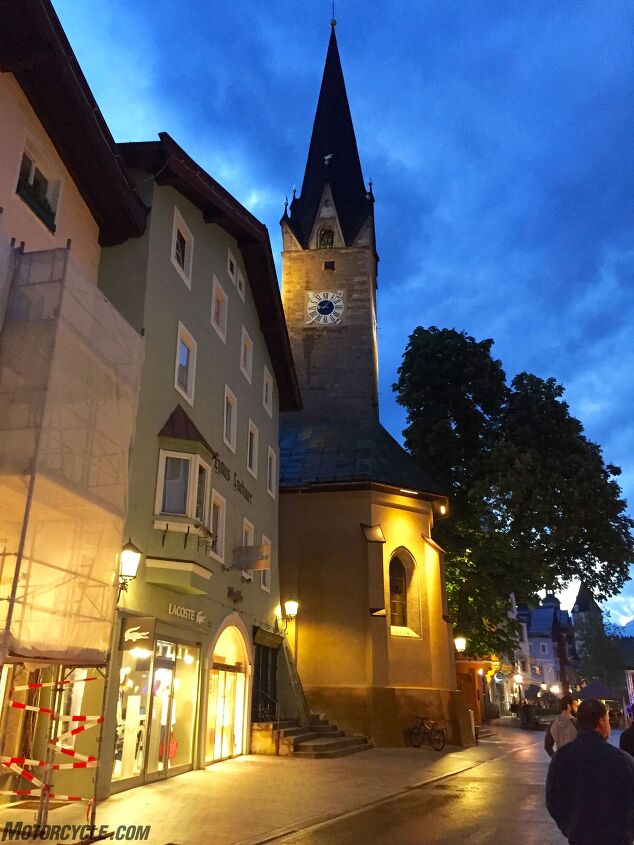
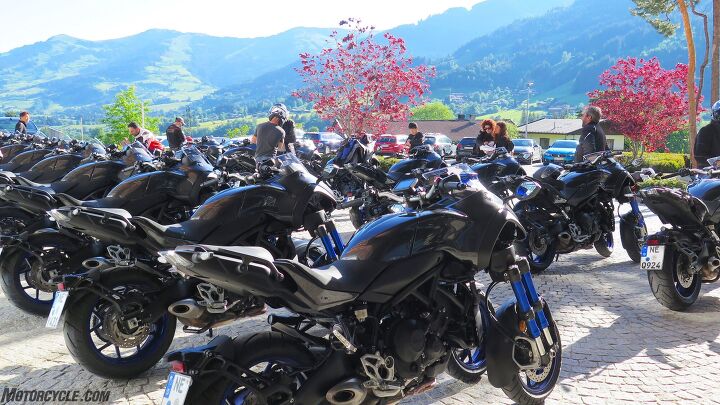
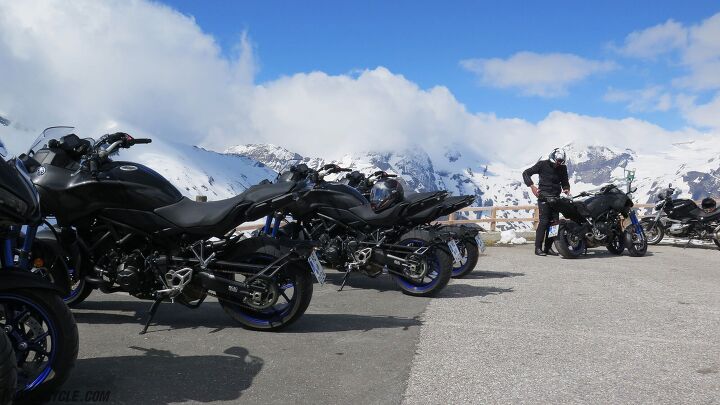
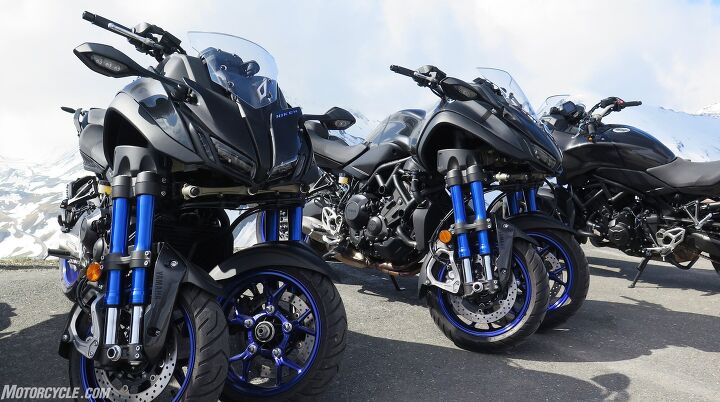
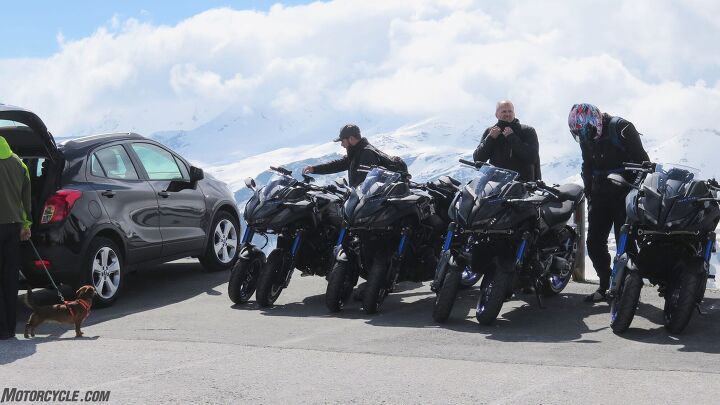
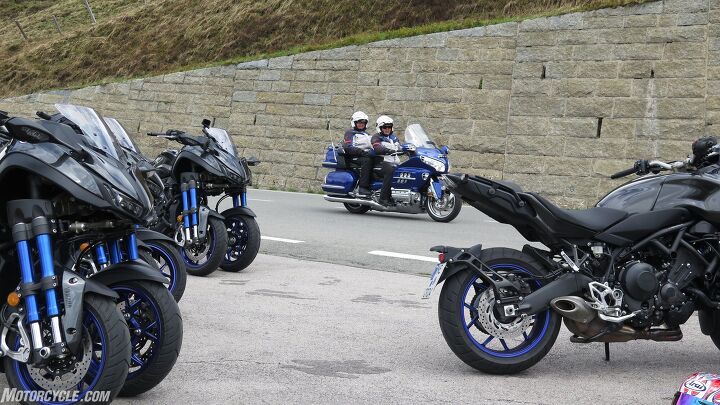
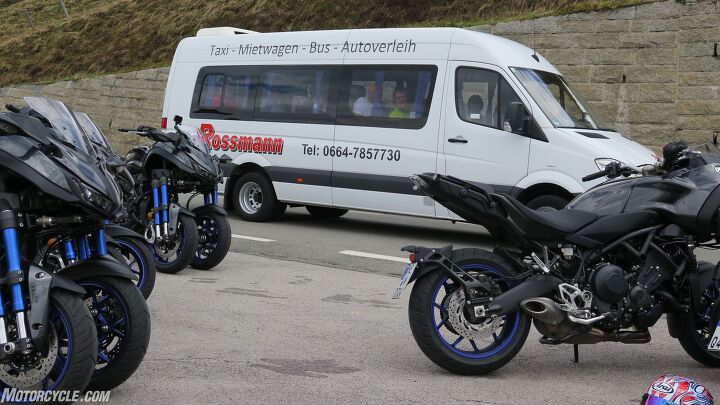
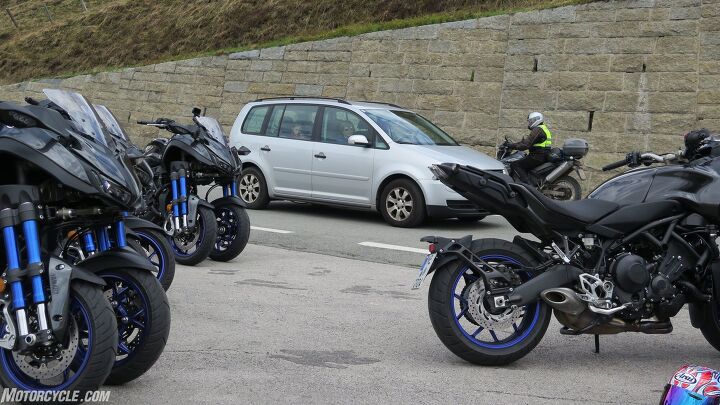
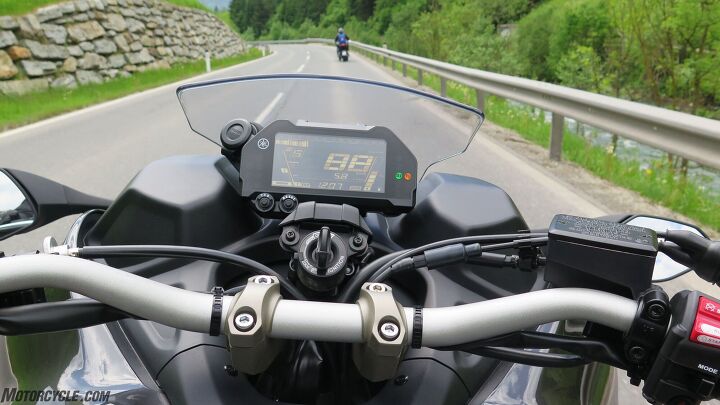
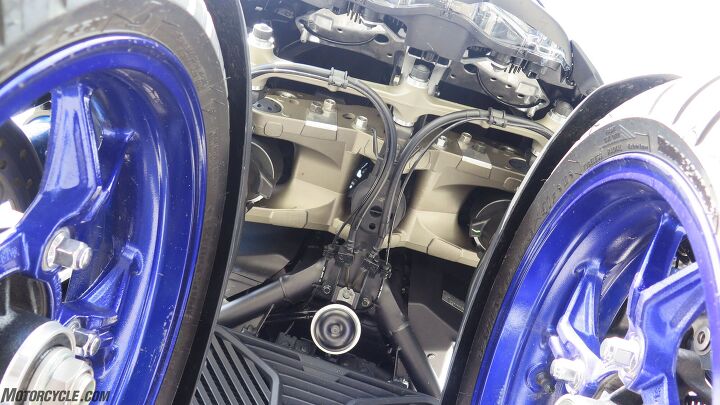
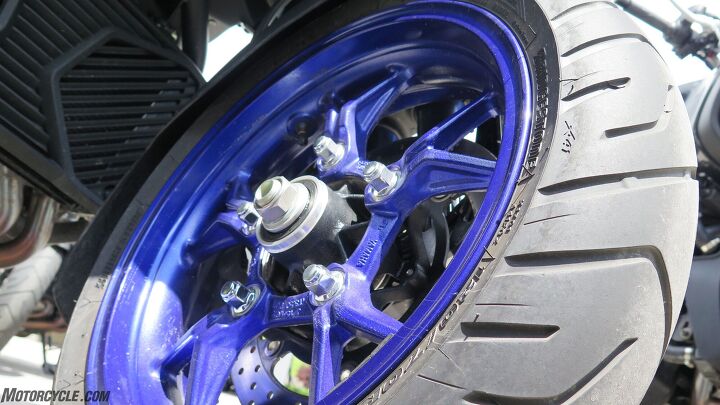
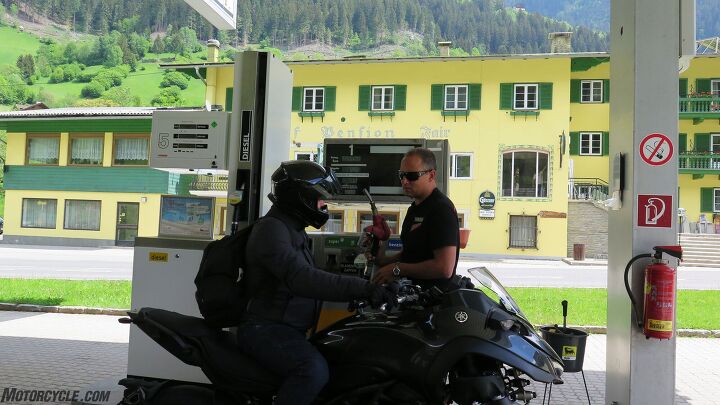
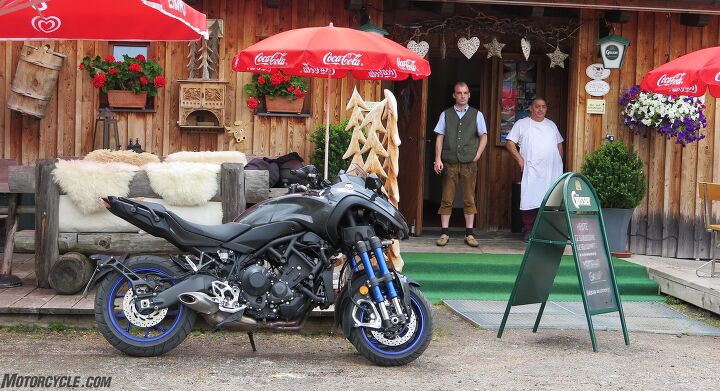
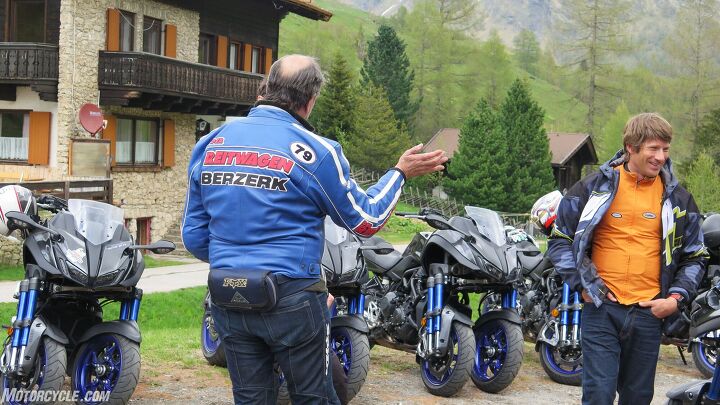
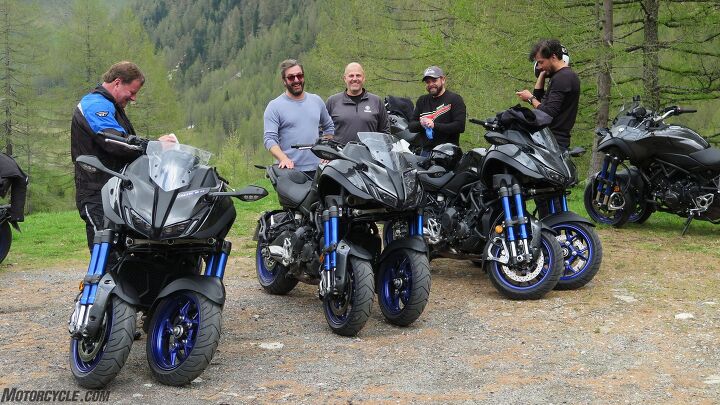
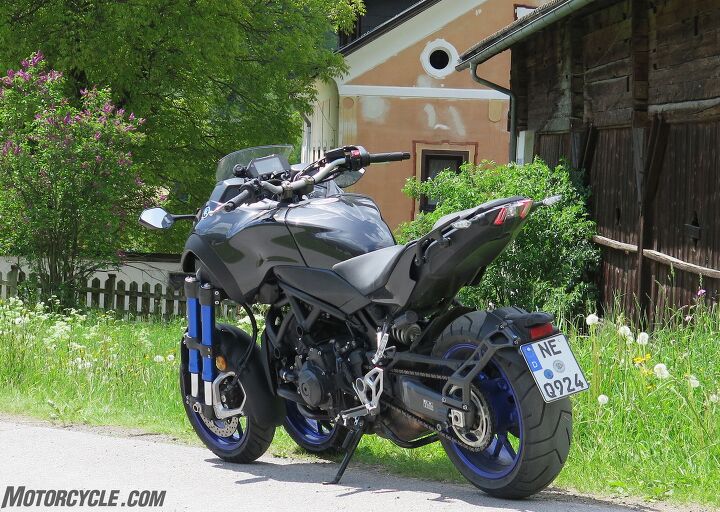
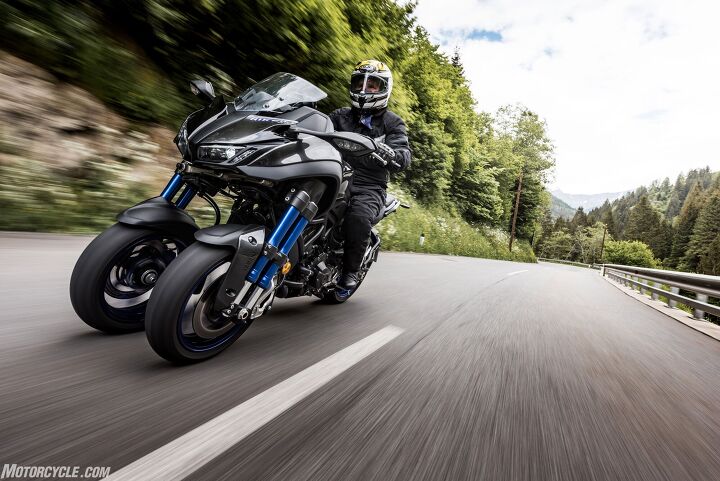
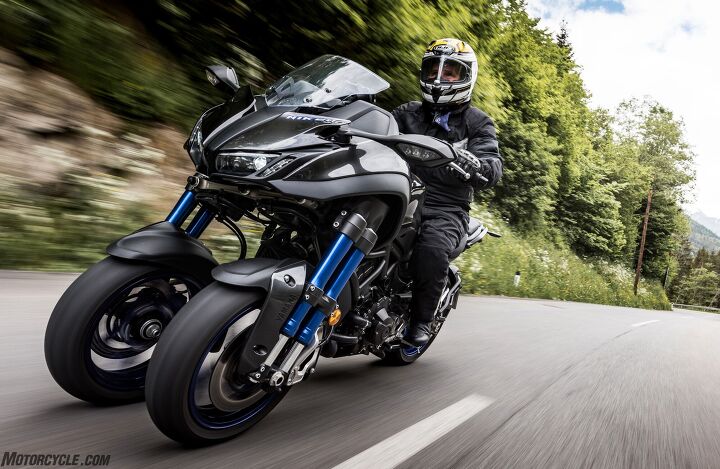
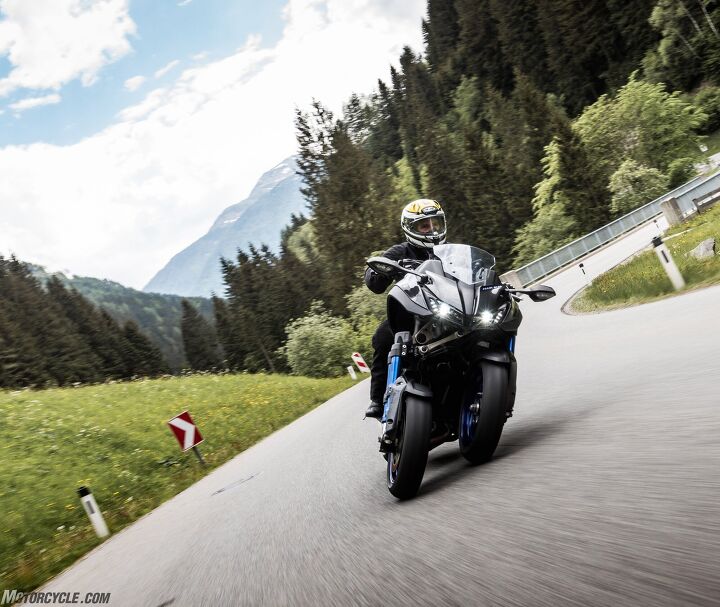
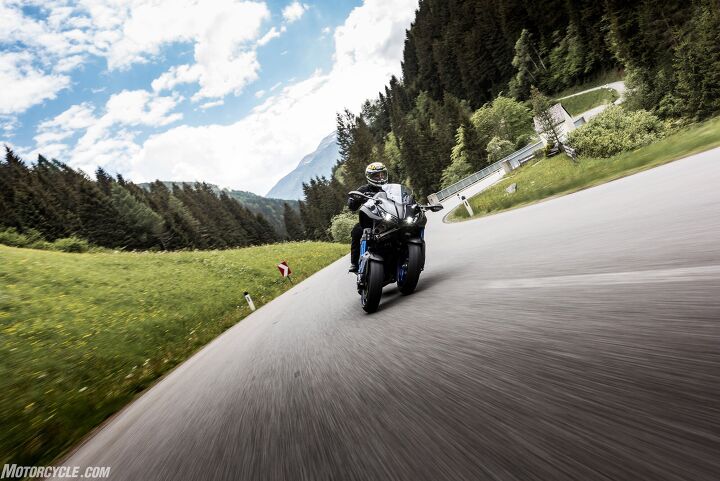
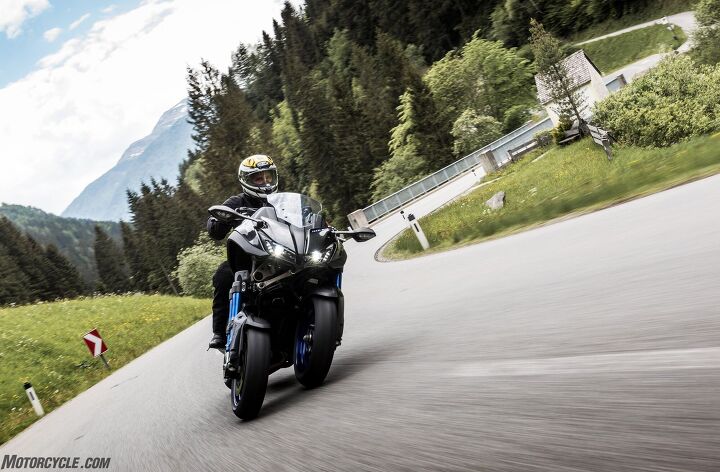
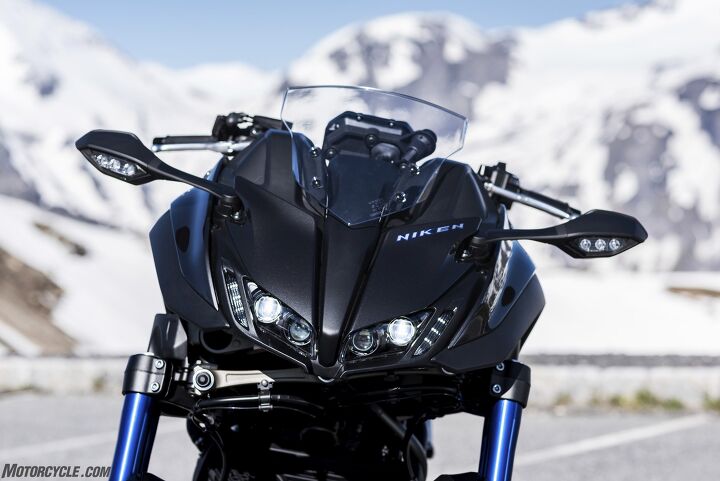
 RSS Feed
RSS Feed

5/28/2018
1 Comment